
Sask Math scope and sequence charts
- Subject:
- Foundations
- Math
- Workplace and Apprenticeship
- Material Type:
- Assessment
- Author:
- Student First
- Greater Saskatoon Catholic Schools
- Date Added:
- 09/28/2021

Sask Math scope and sequence charts

"These Math Screeners were developed in response to the need expressed by teachers for a tool that would aid them in identifying specific skills and concepts where there were ‘gaps.’ Having this data will allow teachers to respond more effectively to students’ learning needs."

This site includes apps, games, learning tools and other additional supports for math at school and at home.
Many virtual manipulatives are available including Canadian Money!
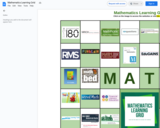
This clickable grid gives you access to a wide variety of math websites. Explore everything from financial literacy activities to number games and activities for younger children.

Tag Line: Challenging math problems worth solving
A collection of math problems that require some good thinking, and maybe a few attempts. The idea is to move beyond procedural understanding.
The collections are sorted from grades Kinder to High School (for common core standards in the US - but probably transfer well). The problems usually involve some blank spots which must be filled with numbers. In many of the problems you can not use a digit more than once.
Like similar sites that provide these problem style questions, you can submit your own to add to the collection.

PBS has created and shared tons of media rich, engaging, digital lessons for a wide range of grade levels and subject areas.
Find FREE videos, interactives, lesson plans, and more just for teachers like you. Choose from lots of filters that will customize your search so you can find exactly what you're looking for.
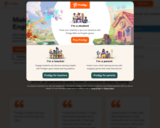
Join over 20 million students, teachers, and parents using our free, curriculum-aligned math game for Grades 1 - 8.
Prodigy is a free, Pokemon-style math game that has been proven to improve student scores and confidence! It is aligned to the Ontario curriculum for grades 1-6, and features content from each of the five major strands.
Prodigy was designed with three primary goals in mind:
1. To create deep engagement so students double their math practice time at home.
2. To equip teachers with reports and assessment tools to inform their instruction.
3. To provide curriculum aligned content for free, regardless of a student’s demographic.
Teachers can create assignments and assessments, align them curriculum, and check in on progress. The program automatically adapts to students who are struggling or excelling, but teacher's also have the option to override grade levels to adapt and modify for individual students. Parents can connect and see what their child is working on, and students can access the program from any computer or tablet.
**NOTE - For FREE summer or at home access, ask your child's teacher to create an account!

Same But Different is a powerful routine for use in math classrooms. The activity of same but different is an activity where two things are compared, calling attention to both how they are the same and how they are different.
This apparent paradox is the beauty of the activity. It is important to notice the word BUT. Instead of making a choice – am I going to prove that these are the same or am I going to prove that they are different – students are considering how two items can be both. This is a critically important distinction.
Not same OR different, rather same BUT different.
There are categories for addition/subtraction, early numeracy, multiplication/division, measurement, place value, fractions, ratios, geometry, algebra, and high school math.
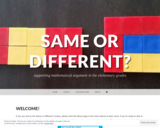
Same or Different? is a routine that provides students opportunities to construct arguments when comparing objects, such as numbers or shapes.
A routine like Same or Different? provides accessible opportunities for even youngest students to learn how to talk about various features of mathematical objects – quantity, shape, color, orientation, and arrangement, to name a few.
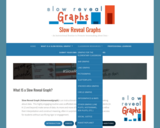
Slow Reveal Graph (#slowrevealgraph) is an instructional routine that promotes sensemaking about data. This highly engaging routine uses scaffolded visuals and discourse to help students (in K-12 and beyond) make sense of data. As more and more of the graph is revealed, students refine their interpretation and construct meaning, often in surprising ways. This routine increases access for students without sacrificing rigor or engagement.
You will find all types of graphs for all ages of learners from elementary to high school.
Here are the steps:
- It starts with a graph that has been stripped of context: its numbers, its labels, its title.
- The teacher facilitates a discussion around what students notice and wonder. (The slides give discussion suggestions)
- Then another slide is revealed.
- Students identify what information is new.
- Then another slide is revealed.
- Again, students identify what information is new (the title) and discuss how this changes their understanding of the graph.
- As more slides are added, more insight into this data representation is revealed.
The introductory page for the graph also offers more information about the context for this graph, other content connections, and paired texts for students to explore.
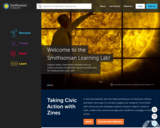
The Smithsonian Learning Lab puts the treasures of the world's largest museum, education, and research complex within reach. The Lab is a free, interactive platform for discovering millions of authentic digital resources, creating content with online tools, and sharing in the Smithsonian's expansive community of knowledge and learning.
Use the search tool to discover lots of resources on endless topics. The sky's the limit!

At Starfall, children have fun while they learn.
Starfall.com® opened in September 2002 as a free public service to teach children to read. Since then it has expanded to include language arts and mathematics for preschool, kindergarten, first grade, second grade, and third grade. Starfall’s emphasis on phonemic awareness, systematic sequential phonics, and common sight words in conjunction with audiovisual interactivity has proven effective in teaching emergent readers. Starfall activities are research-based and align with Individual and Common Core State Standards in English language arts and mathematics.
The program emphasizes exploration, play, and positive reinforcement—encouraging children to become confident and intrinsically motivated. Starfall is an educational alternative to other entertainment choices for children and is especially effective for special education, homeschooling, and English language development (ELD, ELL, ESL). It is widely used in schools that serve children with special needs and learning difficulties.
Our low-cost membership program expands the free content to include animated songs, mathematics, and reading activities spanning K-3. Membership also supports the production of new interactive games, movies, and more for both the Starfall.com website and Starfall apps for mobile devices.

The following modules are available for download:
*Module 1 - Multi-Level Instruction - Planning for Student Diversity
*Module 2 - Reading Instruction - Critical Elements
*Module 3 - Instruction in Mathematics - Effective Instructional Practices
*Module 4 - Written Expression - Effective Instructional Practices
On y trouve trois modules de disponibles en français:
*Module 2 : Instruction en lecture - Éléments essentiels
*Module 3 : Instruction en mathématiques - Pratiques pédagogiques efficaces
*Module 4 : Expression écrite - Pratiques pédagogiques efficaces
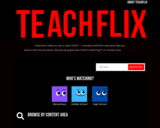
One of Ditch That Textbook's newest resources is called TEACHFLIX
TEACHFLIX offers tons of great YouTube videos for your class all in one place. It's quite a collection! Check it out!
You'll find sections on: 360 Videos, Computer Science, Elementary History, Middle & High School History, Elementary Mathematics, Middle School Mathematics, High School Mathematics, Elementary Science, Middle School Science, High School Science, Read Alouds, and Virtual Field Trips
You can browse by elementary, middle school and high school OR by content area!

Toy Theater playfully teaches conceptual foundations with online interactive games and activities that have real educational value. Find resources for math, reading, art, music, puzzles and games.

This site offers Fun Educational and Online Games for Kids in PreK - 5. It introduce kids to new, exciting ways of learning with the help of fun online games, videos, experiments, puzzles, coloring sheets, and more!

This site is full of free (and paid) resources to help teachers and students.You can filter by age, grade, subject, and more.Search everything from back to school, orange shirt day, and subject specific topics to find great resources.

Online manipulatives including spinners, dice, geoboards, cubes, rekenrek, number lines, etc.

e-Learning For Kids is a great site with some wonderful interactive learning games that are engaging and fun.
Click - Kids Start Here to get students directed to the activities.
You can use the icons/tabs across the top of the page to filter the activities by subject and grade!
This site is for K-6.